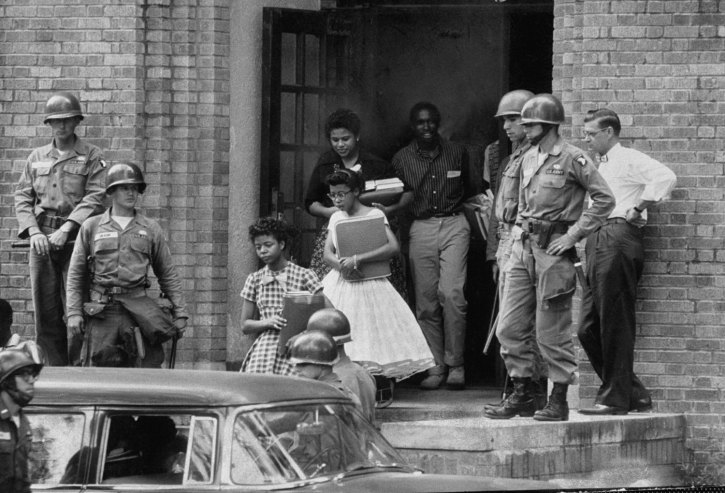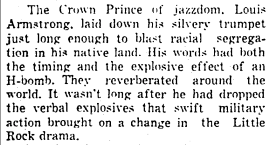Us Americans love our musical stars. In fact, many people idolize them so much so that what they say and do can have a significant impact. If Taylor Swift is seen wearing a certain dress one week, the next week it is sold out from every Forever 21 in the nation. Likewise, if Adam Levine gets a new hairstyle, every other young adult male will be making an appointment to their local Great Clips to rock the new do. Okay, so maybe shifting one’s physical appearance isn’t what you would call significant, but what about political opinions? Many artists choose not to share their views in fear of influencing their fans, but that certainly doesn’t stop some musicians from offering up endorsements. In the most recent presidential elections, music stars such as Rodney Atkins and the Zac Brown Band sent their support to Republican candidate Mitt Romney in the form of new songs and live performances.1 Musical celebrities hold a fair amount of clout in society and, for some, are not afraid to use it.
Louis Armstrong is still a beloved American musical figure for his soulful trumpet playing and unique blues and jazz sound who was also lucky enough to bridge the color gap with his music. Adored by both white and black audience members, Armstrong had it all as a performer of the era, and he was able to shake the world with his influence.

Little Rock Nine – LIFE.com
After the Supreme Court’s ruling that segregated schools was unconstitutional in the 1954 court case Brown vs. Board of Education, nine african-american students (later dubbed “The Little Rock Nine”) were refused entry in to the previously white Central High School in Little Rock, AK by the governor at the time, Orville Faubus. It wasn’t until the involvement of President Eisenhower did the students finally overcome their first of many hurdles by physically entering the building.2 The events surrounding the Little Rock Nine sparked media attention across the nation, but it not only reached American citizens everywhere, but also a number of famous celebrities including Louis Armstrong.
 Armstrong was furious at the discrimination faced by the Little Rock Nine and did not hold back. In what was described as having the “explosive effect of an H-bomb”3, called out both Governor Faubus and President Eisenhower for their poor leadership. Armstrong was also quick to call off his government-sponsored tour to Russia, stating that these instances have adverse affects on U.S. relations with other countries and that when he was asked “What is wrong with you country”, he wouldn’t know what to say.4 Louis Armstrong stood by his beliefs and with his national image, was able to cause a noticeable impact. Some believe that it was Armstrong’s “verbal explosives” that expedited the whole process.5 Even if this is not the case, however, he did spark a bit of a push back among his peers. An article published in the Chicago Defender, a black newspaper, displayed that many many other african-american celebrities agreed with Armstrong’s thoughts. Singer Lena Horne and baseball legend Jackie Robinson are just two of the multiple black stars that took a stand with Louis Armstrong to show the power of what a little clout can do.6
Armstrong was furious at the discrimination faced by the Little Rock Nine and did not hold back. In what was described as having the “explosive effect of an H-bomb”3, called out both Governor Faubus and President Eisenhower for their poor leadership. Armstrong was also quick to call off his government-sponsored tour to Russia, stating that these instances have adverse affects on U.S. relations with other countries and that when he was asked “What is wrong with you country”, he wouldn’t know what to say.4 Louis Armstrong stood by his beliefs and with his national image, was able to cause a noticeable impact. Some believe that it was Armstrong’s “verbal explosives” that expedited the whole process.5 Even if this is not the case, however, he did spark a bit of a push back among his peers. An article published in the Chicago Defender, a black newspaper, displayed that many many other african-american celebrities agreed with Armstrong’s thoughts. Singer Lena Horne and baseball legend Jackie Robinson are just two of the multiple black stars that took a stand with Louis Armstrong to show the power of what a little clout can do.6
References:
1 Lee, Kristen. “Country Music’s Biggest Stars Singing Mitt Praises .” NY Daily News. August 27, 2012. Accessed April 6, 2015.
2 Wallace, Vaughn. “Little Rock Nine: Photos of a Civil Rights Triumph in Arkansas, 1957 | LIFE | TIME.com.” LIFE. 2014. Accessed April 6, 2015.
3 “Ole ‘Satchmo’ Shook the World.” The Chicago Defender (National Edition) (1921-1967), Oct 05, 1957. http://search.proquest.com/docview/492966958?accountid=351.
4 “Satch Blows Up Over Ark. Crisis.” Daily Defender (Daily Edition) (1956-1960), Sep 19, 1957. http://search.proquest.com/docview/493670599?accountid=351.
5 “Ole ‘Satchmo’ Shook the World.” The Chicago Defender (National Edition) (1921-1967), Oct 05, 1957. http://search.proquest.com/docview/492966958?accountid=351.
6 “Back Satchmo’s Blasts at Ike, Gov. Faubus.” Daily Defender (Daily Edition) (1956-1960), Sep 24, 1957. http://search.proquest.com/docview/493577546?accountid=351.

I’m glad you followed up on this episode as related in Monson’s book (which you should probably mention). There’s a clip from Ken Burns’s jazz (which you could embed) showing Armstrong in blackface at the Zulu parade and depicting him playing what many saw as an “Uncle Tom” role. The documentary makes painfully clear why it was so shocking when Armstrong protested the treatment of the Little Rock Nine, but also draws attention to the complexity and depth of Armstrong’s character. Clearly, he found a way to be many things to many people, and we’ll likely never know whether he was simultaneously true to himself.